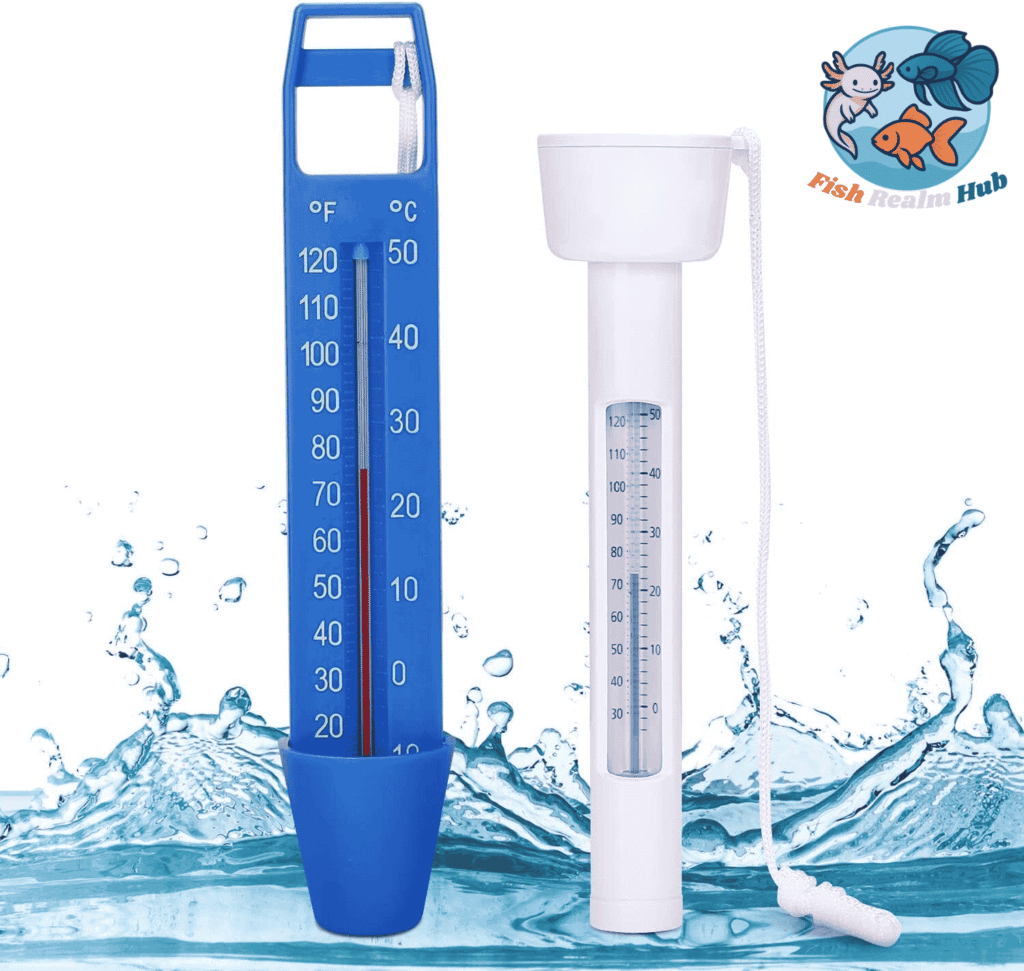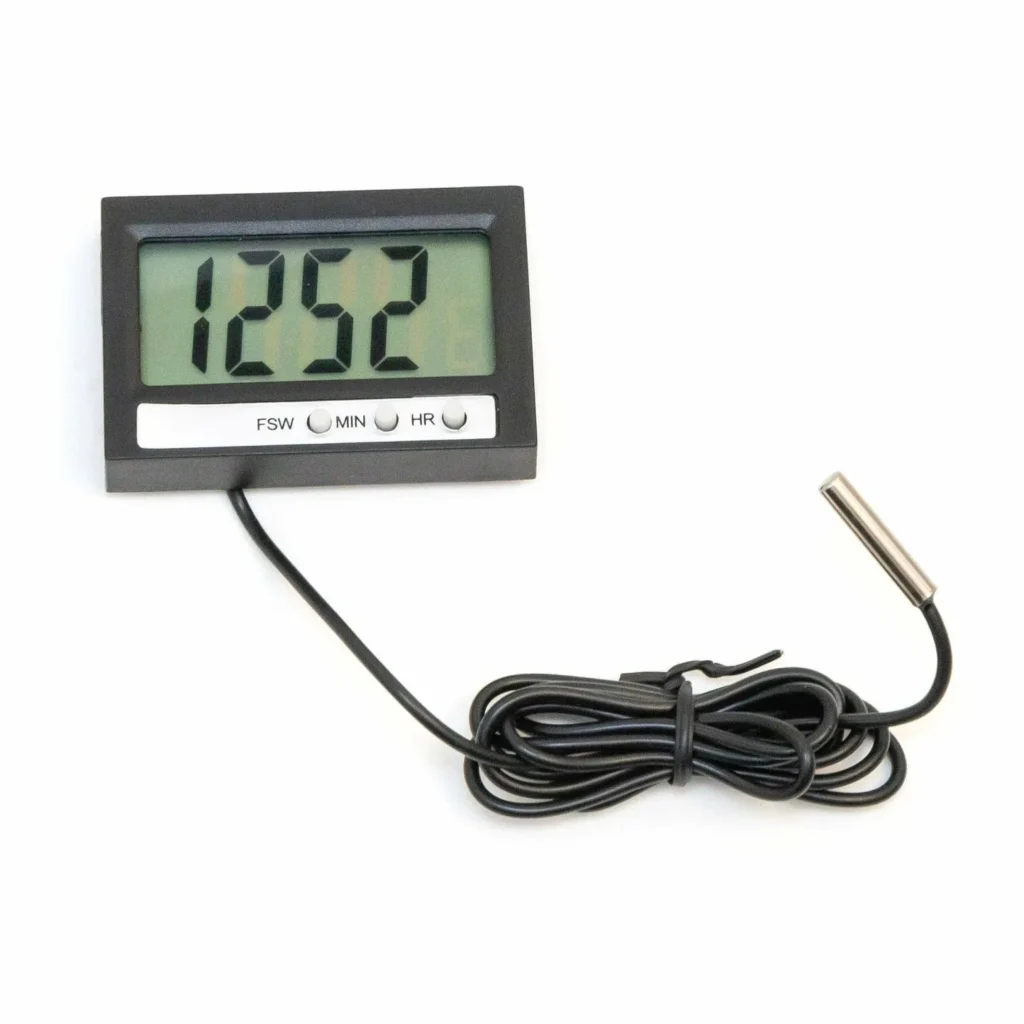When temperatures start to heat up in the northern hemisphere during the dog days of summer, keeping an axolotl tank at the right temperature becomes very important. Based on my own Axolotl tank setup experience, I’ve seen how warmer weather can cause an issue for many hobbyists. As explained in a great article I once read, the best way to tackle this is to dive into simple ways that help keep your axolotls cool.
If you live in places like the US, where summer months get pretty toasty, extra care is needed. Your axolotl friends will definitely appreciate a stable environment, just like we enjoy an ice cream or smoothie to cool off. A quick dip in a pool works for us, but for axolotls, a proper setup is crucial to beat the heat.

One of my personal tips from working on how to cycle an axolotl tank is to always monitor water temperatures closely and act before it becomes a real issue. Try adding fans near the tank, keep the tank away from direct sunlight, and use aquarium chillers if needed. It’s easy once you get the rhythm! Remember, gilldren are sensitive, and maintaining control during summer months can save your pet’s health.
So don’t wait — jump in and apply today’s smart strategies to manage the right axolotl tank size and overall tank setup before the season heats up too much.
How to Keep an Axolotl Tank Cool – Answer
Keeping an axolotl tank cool during the intense heat of summer is very important to protect your pet’s health. Based on real hobbyist experience, the best strategy is to monitor the water temperature carefully using thermometers like analog, digital display, or laser thermometers, and act early before problems arise.
Smart ideas include placing the tank in a cool location like a basement, avoiding sunlight and electronics, using air conditioning, and applying quick cooling methods like frozen water bottles or ice packs carefully. For more serious situations where fans aren’t enough, aquarium chillers offer powerful, reliable cooling to maintain a stable environment. Whether through fans, chillers, or smart placement, ensuring a cool tank is crucial for your axolotl’s comfort and survival.
Thermometers
Keeping an axolotl tank cool starts with knowing the exact temperature at all times. Every hobbyist should have a thermometer because without one, it’s impossible to tell if the tank is too warm. There are many choices available, like analog thermometers with a tube of red alcohol, or a digital display with probes that go into the water.
Some even prefer handheld laser tools, known as temperature guns, which are super easy to use. I personally find the simple design of an analog thermometer very reliable, giving fairly accurate results without needing batteries.
In my larger setups, where the water level sits a few inches below the rim to prevent axolotls from jumping, I noticed the typical analog thermometer sometimes doesn’t reach the surface. In such cases, different types or models might be required to ensure the thermometer stays submerged properly.
No matter what, keeping an eye on the water’s temperature helps protect your pet, especially when managing the conditions in larger tanks.

Digital display thermometers
Using a digital display thermometer is a great step up from the classic analog thermometer when trying to keep your axolotl’s tank at the right temperature. These thermometers give a very detailed reading, but some electronic models can be inaccurate. I once purchased one that showed a true temperature difference of about 6°C (10°F) compared to a reliable source.
To stay safe, always buy a backup thermometer to verify the accuracy. Remember, the readings might decrease in trustworthiness over time, so regular checking is smart.
One helpful feature is the probe that can be submerged inside the water for a potentially more accurate measurement. But you should pay close attention, especially to curious axolotls. They might mistake the probe for food! While I haven’t faced any issues with them trying to eat it, it’s still important to watch out for playful behavior around these devices.

Laser Thermometer
One of the most reliable ways to monitor your axolotl’s tank is by using a laser thermometer. Though a bit expensive, this handheld tool, also called temperature guns, uses a laser to report back the temperature of any surface it is pointed at. It’s very useful for hobbyists who manage several tanks and need a quick, convenient way to check conditions.
I’ve found it especially handy when temperature matching water during water changes or when acclimating new axolotls or cycled media to a new tank.When using a laser thermometer, make sure you aim directly at the water itself from the top and avoid targeting the tank wall. The glass can distort the reading and won’t show the accurate temperature of the water it holds.
This small adjustment can make a big difference in ensuring your axolotl stays safe and comfortable during temperature-sensitive moments.

Smart Cooling Ideas
When summer brings intense heat, keeping axolotl tanks cool can feel stressful, but the good news is there are easy steps to help. Many folks have shared horror stories about lost collection during a sudden heat spike, so acting early is key. I personally use various types of thermometers to monitor water temperature closely, which really helps reduce the worry for my pet’s safety. Some simple methods like using fans, frozen bottles, or aquarium chillers make a big difference without making life hard. Always remember, keeping your tank cool isn’t as difficult as you might think, especially when you know the right way.
Location
When setting up a tank for your axolotl, choosing the right location is very important. To start cooling the water naturally, always avoid putting the tank in direct sunlight. Bright spots or near appliances like televisions, game consoles, and refrigerators can quickly raise the temperature inside. From my experience, the home basement is the best place because basements stay the coldest part of the house all year.
Your axolotl will feel safe and comfortable if the temperature stays steady. Placement has a significant impact on your pet’s well-being, and it’s surprising how much small places inside a home can be hotter for unexpected reasons.
If a basement isn’t available, setting the tank in Garages placed on a concrete floor works too. Always keep the tank nearer the floor rather than higher shelves, as cooler air stays lower and the air temperature rises with height in any room. Be prepared, though, as temperature may still fluctuate during the day, especially in warmer seasons.
Little things like using coverings can help and give some guarantee for a more stable environment for your babies. Taking precautionary measures against heat spikes is not just wise—it’s part of a good care plan that every axolotl owner should think about.
Using Air Conditioning to Help
When trying to keep an axolotl tank cool, air conditioning can be a powerful tool if you have access to it. Simply lowering the temperature inside your home to about 21°C (70°F) makes many cooling suggestions much more effective. If you don’t already have central air, you can purchase portable air conditioners or window units to cool small rooms where your tank is placed.
I once used a portable unit myself, and while it worked great, it was quite expensive and needed a window or door to vent the hot air properly.
Cooling with Ice Techniques
One of the most suggested methods on the internet for cooling an axolotl tank is using ice. This method can temporarily lower the water temperature, but it isn’t the most efficient way and needs a hobbyist to be present often to add new ice. In small bodies of water, placing ice can rapidly and immediately cool the surrounding area, but it also increases the risk of temperature shock for axolotls that swim nearby. While Cooling with frozen water bottles can work in a pinch if needed, it is not a permanent solution.
When I had to cool my tank urgently, I used disposable plastic water bottles by giving them a good rinse, peeling off the label, filling them with dechlorinated water, and twisting the caps before putting them in the freezer. Once the frozen bottle was ready, I placed it in the tank and removed it after it thawed to put it back in the freezer for reuse, keeping the water consistently below 20°C (68°F).
Frozen water bottles or ice packs can reduce the temperature quickly if the fan or chiller goes out. Using 2 litre soda bottles filled 3/4 to the top with frozen water is great for big tanks, while Smaller bottles are better for smaller tanks. However, there are caveats like a sudden drop causing extreme swings in temperature, which isn’t good for axies. Always have the temperature monitored closely and swap in a replacement when one melts too much.
Cooling with an Aquarium Fan
When it gets hot, many people really need a way to maintain the perfect temperature in their axolotl tanks for the safety of their little floofs. One amazing trick is to use an aquarium fan! A good fan works by circulating the air above the water, which causes the water’s temperature to drop nicely. A friend of mine suggested it to me, and honestly, it can bring the temperature down by between 4-6 degrees, which keeps your axie in the zone they feel happiest in.
You can either use a specific fan made for aquariums that is sleek and quiet, or grab a big, flat(ish) fan from a store at a not bad price point. Just know that while big fans do the job, they might not look good sitting over the tank and can be a little noisy. Personally, I like the small aquarium fans better—they’re quieter and thank goodness my axies seem to thank me with happy wiggles!
Water Chillers for Serious Cooling
When a simple fan just doesn’t cut it and you’ve already tried everything to cool your axolotl tank, you might have to enter the world of aquarium chiller options. In places with extremely hot climates or humid conditions where air conditioning struggles, cooling becomes a serious challenge. Many unfortunate folks who love axolotls but live where the heat gets crazy intense know that basic tricks won’t do.
This is where a chiller comes in as an effective but expensive method. Water passed through external devices like chillers is subsequently cooled, maintaining a stable temperature and offering real peace of mind.
Setting up a chiller can seem difficult for new hobbyists because it often needs careful set up with additional equipment like a pump or a canister filter. Plus, the purchasing process itself can be a bit overwhelming with so many different styles available online, each having different costs. Some DIY versions exist too, but they can be tricky and complicated if you aren’t familiar with technical setups.
In my experience, while DIY solutions sound tempting, it’s much safer to buy a ready-made unit unless you’re very confident. Some chillers are silent, relatively small, and easily mounted on the top of the tank, while others come with a higher price point, being installed under the tank and offering very powerful performance.
Even though the additional cost can be steep, many axolotl keepers, myself included, have been impressed by how chillers transform the experience. No more stressing over an uncomfortably warm lotl aquarium! If you invest wisely, you’ll find that some others in the market offer fantastic features, ensuring your pet remains happy and safe through the toughest summers. Truly, for those facing drastic measures, a quality aquarium chiller can feel like a lifesaver.

